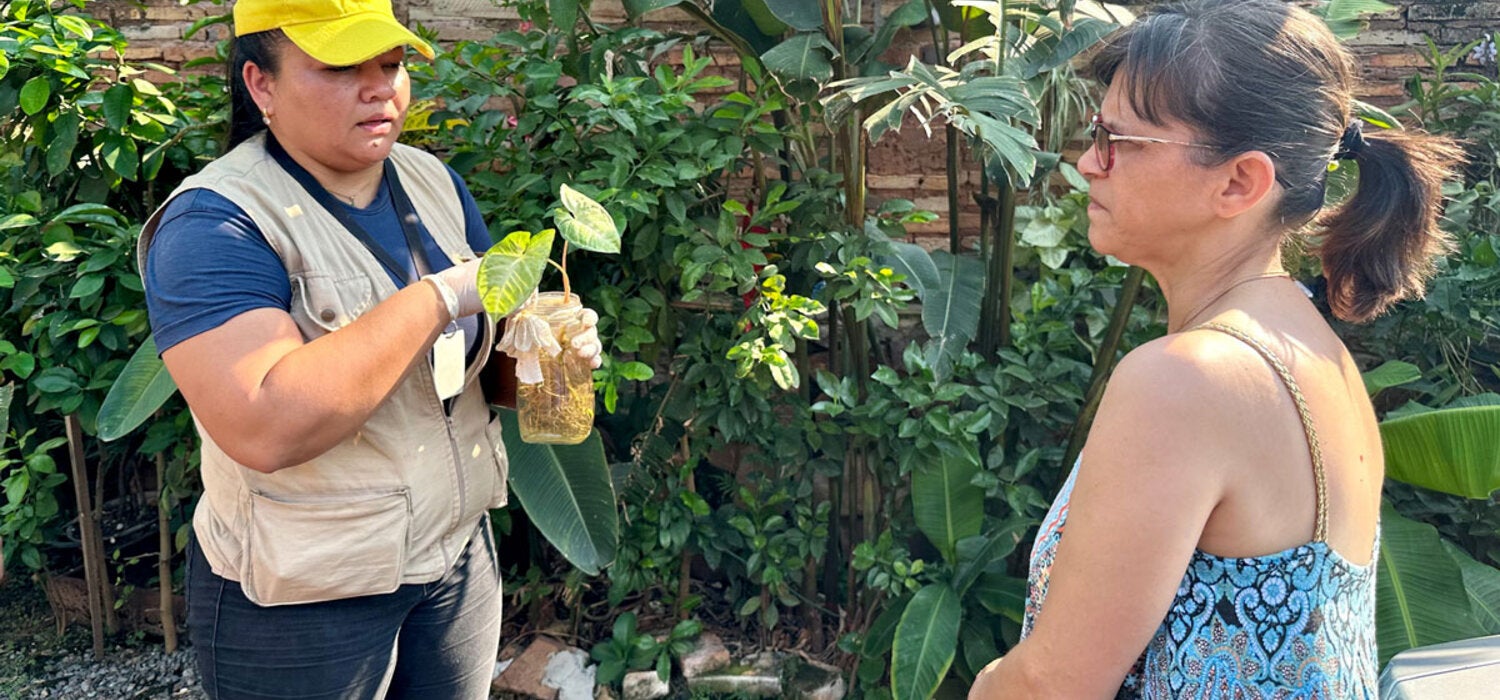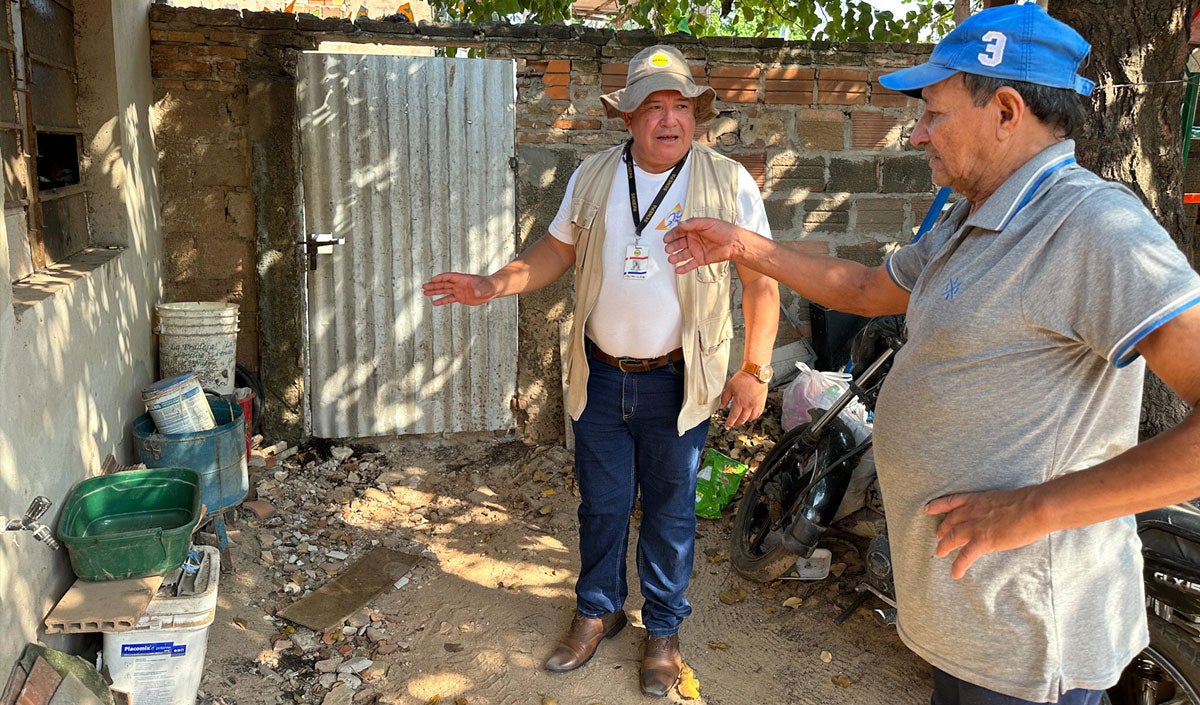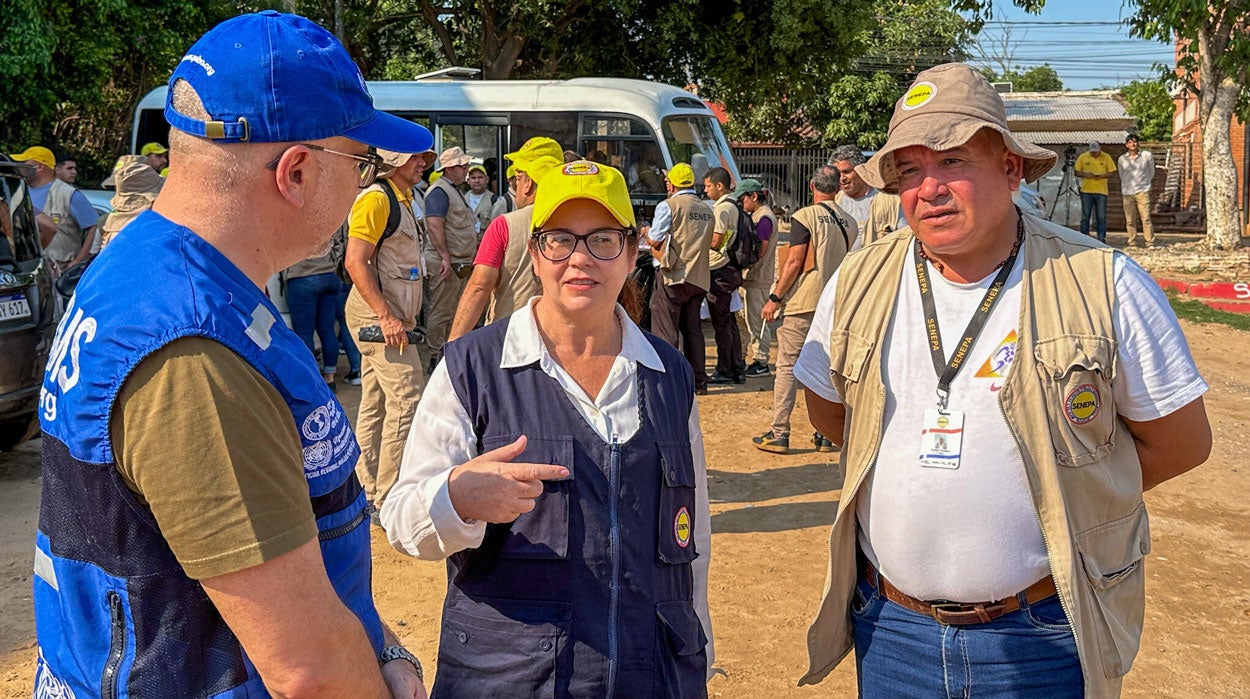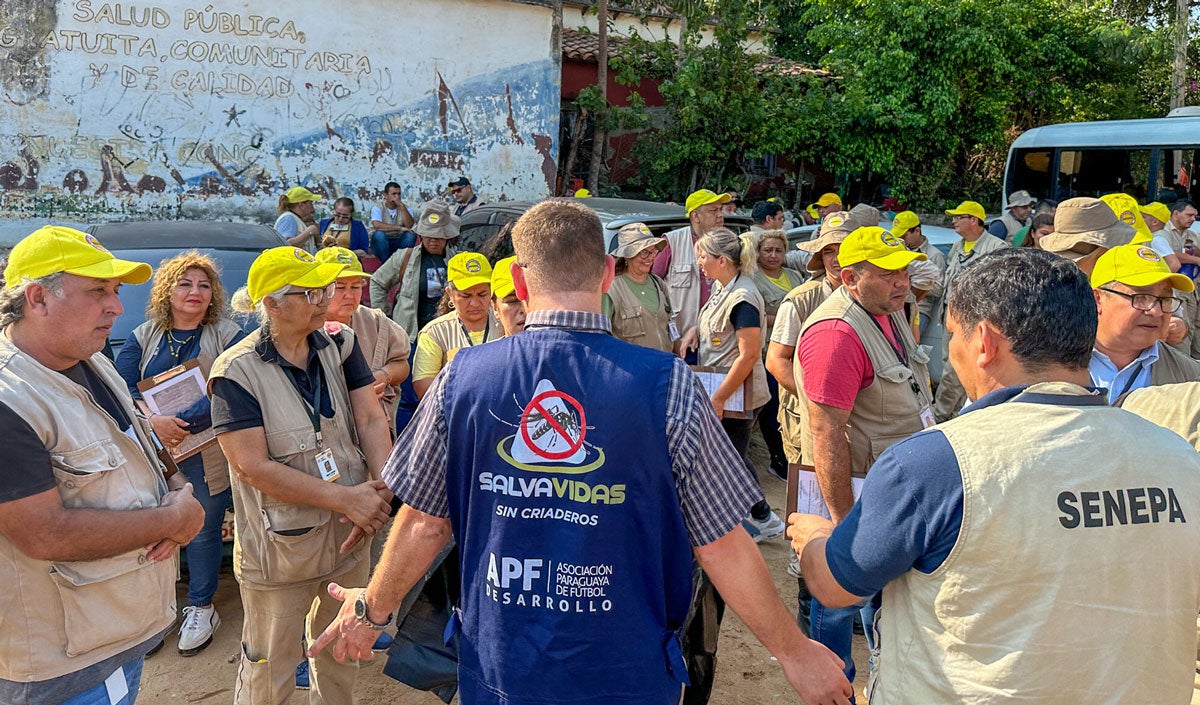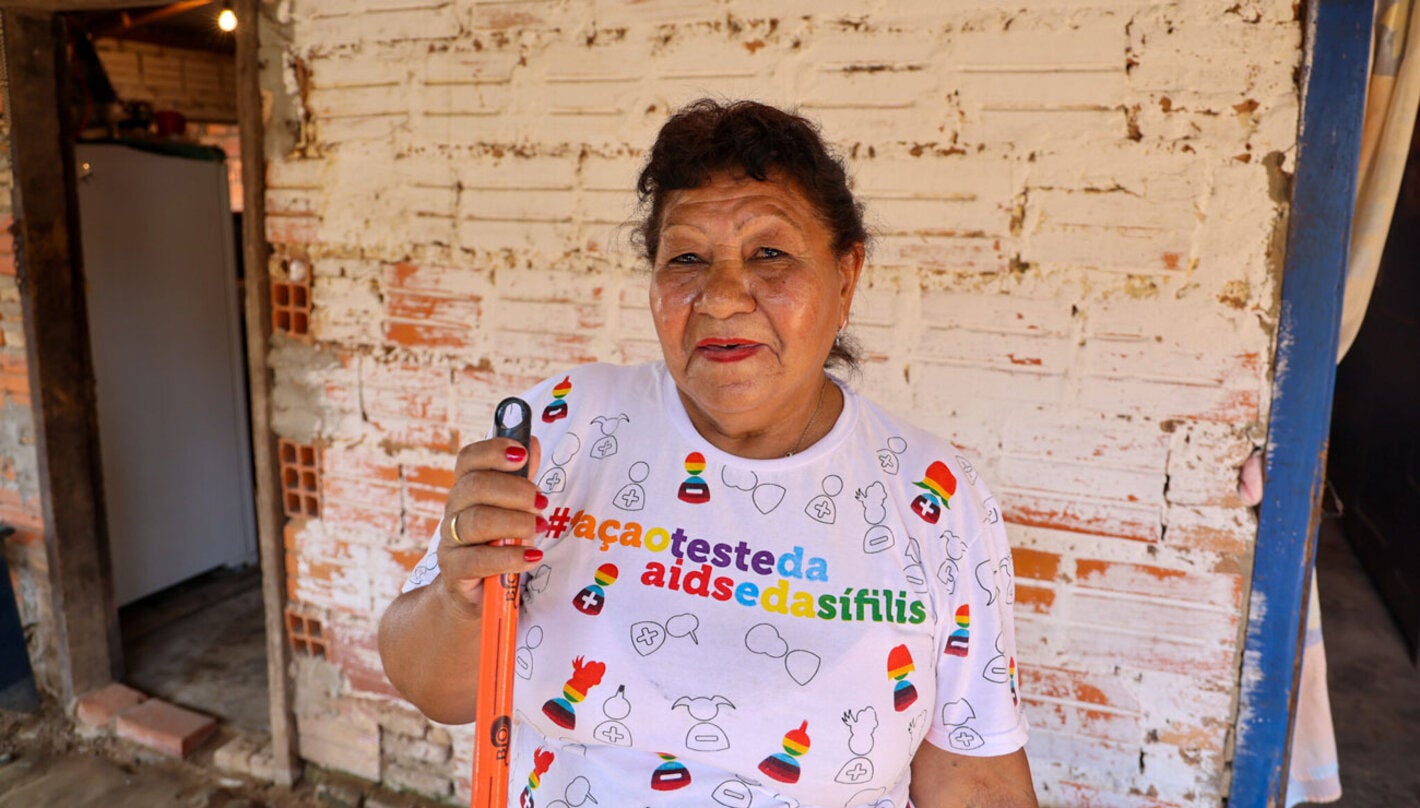Cleaning and awareness-raising “mingas” are one of the strategies used by SENEPA to reduce the risk of diseases transmitted by Aedes aegypti. To help guide these initiatives, SENEPA uses a manual developed by the Pan American Health Organization (PAHO), which provides information on how to organize the community to control the vector.
For Lourdes Ocampo "there are a lot of" mosquitoes in the neighborhood. This is why the SENEPA visit was "very important because they teach us things we don't know". During the tour, the Service's technicians identified a glass vase with water inside the house, a potential breeding site for mosquitoes. After treating it with a chemical, they advised Lourdes to plant the flower outside.
According to the SENEPA technical director, most of the breeding sites found in Asuncion are unused objects: products that can be discarded, such as bottles, cans, and old car tires, “that people have not removed from their homes.”
To encourage people to get rid of old car tires, a “tire marathon” was held during the minga, promoted by the Municipality of Asunción to mobilize neighbors to dispose of these potential mosquito breeding sites.
Muñoz hopes that these actions will have an impact on reducing the number of dengue cases and empower the community to keep their homes, yards and neighborhoods free of breeding sites. "If the epidemic is going to come, we need to delay its onset as much as possible and when it starts, we need to ensure it’s of lesser magnitude," he says.
Addressing factors related to human behavior and environmental hygiene is crucial to addressing dengue in the community.

